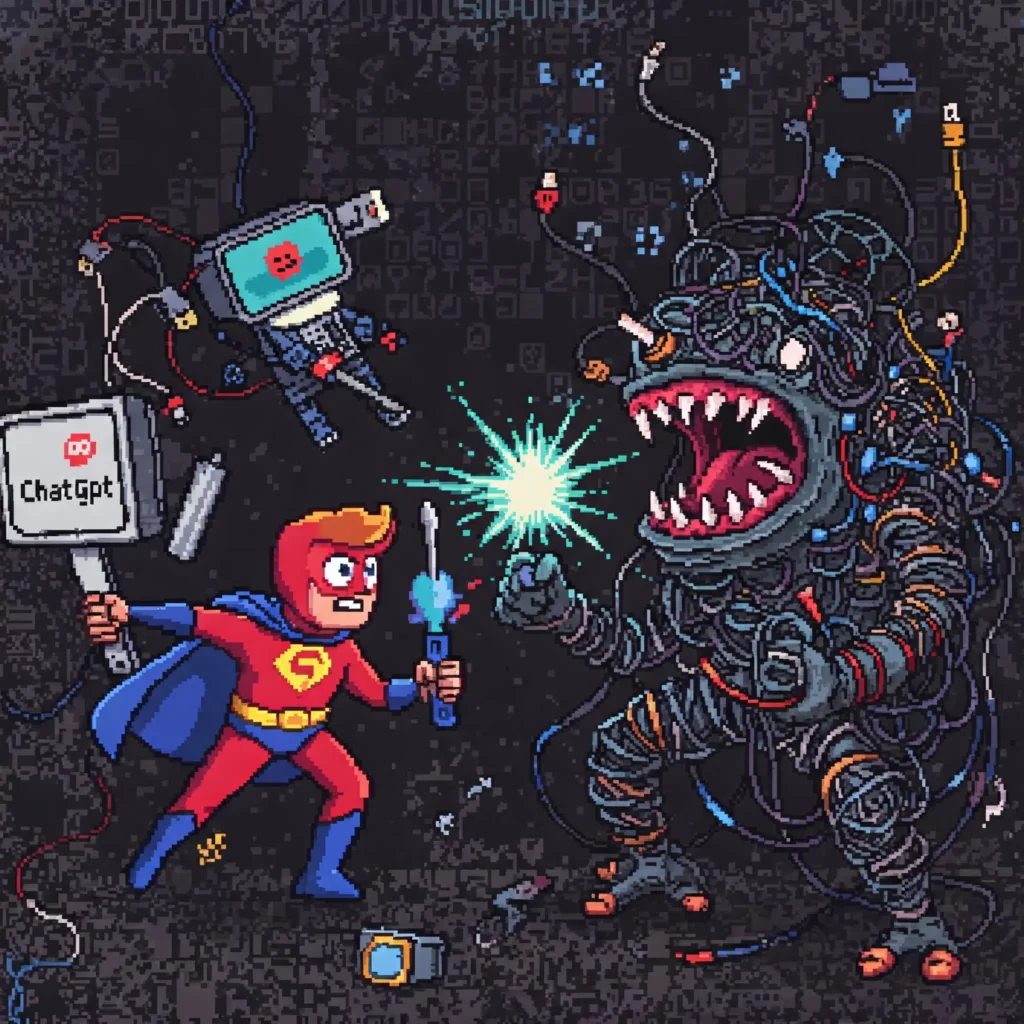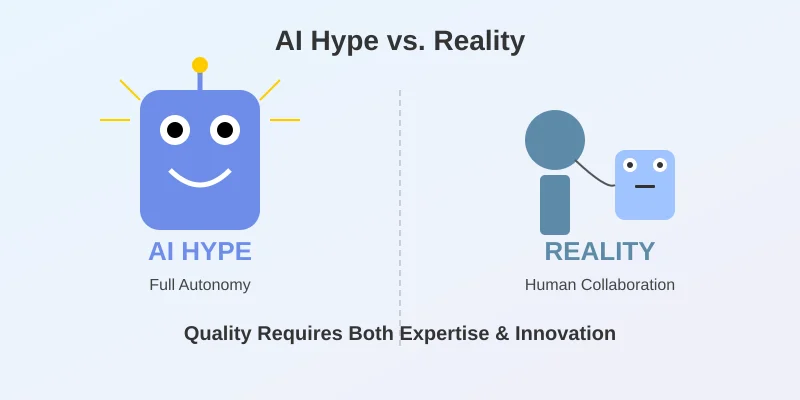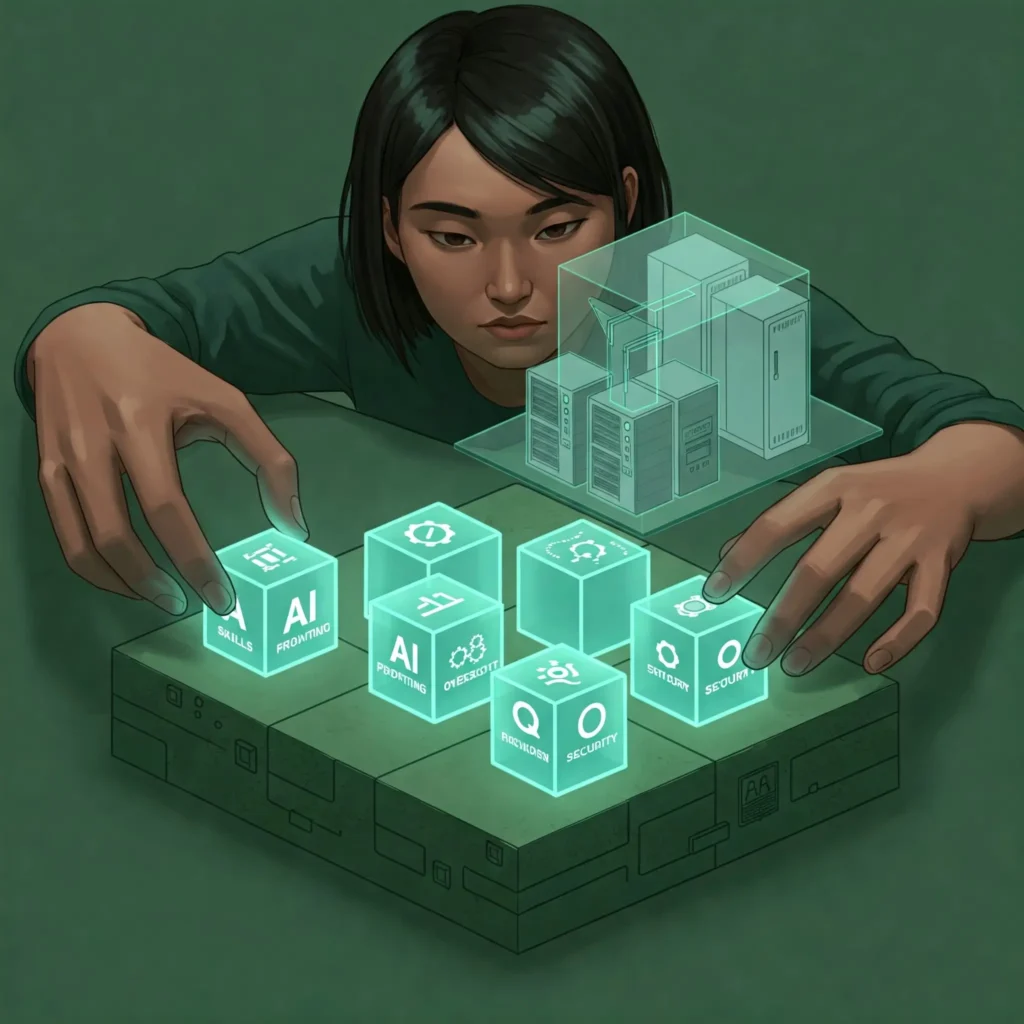
Hey everyone,
If you’ve been following along with my ‘Chronicles of a Home Data Center‘ series – charting the journey of building the very infrastructure hosting this blog – you might be wondering where the next technical deep-dive post is. Well, I’ve decided to hit the pause button on the ‘Chronicles of a Home Data Center‘ series, just for a little while.
This wasn’t an easy decision. I’m incredibly excited about self-hosting, Kubernetes, and sharing that journey through the ‘Chronicles of a Home Data Center‘. However, as I went through the process of setting everything up – configuring the cluster, tackling networking, deploying persistent storage, and getting this WordPress site running smoothly – I had a crucial realization.
Table of Contents
My Secret Weapon: AI Assistants

The truth is, I didn’t do it alone. Far from it. Throughout the setup, troubleshooting, and optimization phases documented (or soon-to-be documented!) in the ‘Chronicles of a Home Data Center‘, I relied heavily on my trusty AI companions – tools like Google’s Gemini, Anthropic’s Claude, and others.
- Stuck on a cryptic
kubectlerror? AI helped decipher it. - Needed a baseline YAML configuration for a service? AI provided a starting point.
- Trying to understand a complex networking concept within k8s? AI explained it in different ways until it clicked.
- Debugging why a pod wasn’t starting? AI offered potential causes and solutions.
These tools were instrumental. They accelerated the process, helped me overcome hurdles I would have spent hours (or days!) wrestling with, and ultimately enabled the success of the project featured in the ‘Chronicles of a Home Data Center‘ so far.
And, if you don’t already notice, even crafting this very blog post explaining the pause involved collaboration with my AI friend, Gemini. While the core idea, the desired style, and the final check on all content are firmly mine, Gemini helped handle some of the nitty-gritty details of phrasing and structuring the text – a perfect illustration of how integrated these tools can become, even beyond purely technical tasks.
The Dilemma: Setting You Up for Success

And that’s where the pause comes in. It struck me that continuing to post detailed technical walkthroughs for the ‘Chronicles of a Home Data Center‘ without acknowledging the significant role AI played in my process, and more importantly, without ensuring you feel comfortable leveraging these same tools, would be a disservice.
It would be like showing you how to assemble complex furniture but neglecting to mention I used power tools while you only have a manual screwdriver. The end result might look achievable, but the process would be vastly different and potentially frustrating if you tried to replicate it directly without the same assistance or the skills to use it effectively.
My goal with the ‘Chronicles of a Home Data Center‘ isn’t just to show what I built, but to empower you to build similar things. If a core part of my process involves effectively interacting with AI, then simply showing the technical steps isn’t enough. It feels incomplete and potentially sets you up for unnecessary hurdles. Addressing the AI skills first feels crucial for genuine empowerment.
My personal dilemma reflects a larger context we’re all navigating in this rapidly evolving technological landscape. To effectively build the AI skills we actually need, it helps to first grapple with the reality of AI beyond the headlines and the hype. So, before we discuss how to build AI literacy later on, I want to generally share some stories and thoughts about AI based on my experiences. My hope is that these perspectives can help us all develop a more grounded and realistic mindset for collaborating with these powerful tools as we move into the future.
AI Hype vs. Reality: My Thoughts on Collaboration and Quality

1. The Illusion of Autonomy: Why Human Oversight is Non-Negotiable
There’s a lot of talk these days about AI replacing humans. While AI is transforming industries, my experience suggests it’s less about replacement and more about augmentation – AI as an incredibly powerful tool that still requires human guidance and understanding. Let me share a brief story to illustrate. A coworker of mine, a brilliant marketing and PR specialist but without deep technical web knowledge, needed to manage and update a WordPress website. She turned to an AI assistant for instructions on making a specific change. She followed the AI’s advice meticulously, step-by-step.
The result? She successfully achieved the exact outcome she described to the AI. The AI fulfilled the request based precisely on the prompt. However, because she lacked the broader technical context of how WordPress themes, plugins, and core files interact, she didn’t foresee (and the AI didn’t warn her about, as it wasn’t asked to check for conflicts) that the change would clash with another part of the site. So, while the intended task was completed, another feature unexpectedly broke. This isn’t really a failure of the AI – it did what it was explicitly asked.
It’s a stark reminder that human understanding and oversight remain crucial. AI, in its current form, often lacks the holistic view, the intuition born from experience, and the ability to anticipate unintended consequences outside its specific instructions unless prompted very carefully (which itself requires knowledge!). We need to be the architects and supervisors, verifying the plans and checking the work, not just blindly following blueprints generated on request. Even highly intelligent professionals in other fields need that foundational understanding when applying AI to technical domains.
2. Quantity vs. Quality: The Trap of Hollow AI Content
This ties into another trend I see: the rise of courses advertising fully automated AI solutions, especially in marketing – promising systems that post to social media without any human input. While the course creators might profit, I seriously doubt the long-term value for the students or their audiences. Why? Because it’s incredibly easy nowadays to generate purely AI-written content, but it’s often incredibly hollow. Frankly, I find interacting directly with an AI much more useful and engaging than reading floods of text generated by one without purpose. Some of my friends have already started complaining about how much of this generic, soulless AI content is overflowing the internet.
My friends aren’t alone; I’ve certainly had my own jarring experiences. For instance, I’ve started receiving AI-powered cold sales calls. If getting an unsolicited call from a stranger wasn’t already off-putting enough, hearing a cold, synthetic AI voice trying to sell me something is genuinely freaky. I hang up immediately whenever I detect that unmistakable AI sound.
Even worse was when I called my bank about a serious system problem needing urgent attention. Instead of a human, I got an AI support agent. Her voice was choppy, clipping words in each sentence, and she just kept asking me again and again to restate my problem, clearly unable to grasp the context or complexity (“her content awareness seem to be problematic” indeed!). My mood shifted rapidly from ‘I need help logging a critical issue’ to ‘Miss AI, please just tell me how to close my account with this bank!’ And perhaps luckily for the bank, though frustratingly for me at the time, she couldn’t even guide me on how to do that properly.
These kinds of interactions exemplify that hollow, unhelpful side of AI automation when implemented poorly or without adequate human backup or understanding. This blog post itself serves as a counterpoint. Yes, Gemini helped write it. But look at the process we’ve gone through (even in our interaction here!): it required significant human direction – me telling it what to write, how to phrase things, defining the core message, providing the stories, requesting specific word changes – to create something that hopefully offers genuine value and reflects my perspective, rather than just being AI-generated “trash” content. Meaningful output requires partnership.
3. Skills Evolve, They Don’t Disappear: AI Raises the Bar
This brings me to a third point regarding AI replacing human skills, particularly the idea that senior technical roles are becoming ‘obsolete’. The word ‘obsolete’ implies our skills become useless, which I find fundamentally incorrect. None of my core technical skills feel useless – not the understanding of how to write a loop, design a database, apply algorithms, architect a full solution like this blog, or any other fundamentals. These remain the essential building blocks.
I’ve trained countless interns, freshers, and juniors. Giving them tools like GitHub Copilot can speed things up, but when the AI fails or introduces bugs (relating back to my coworker’s story), they’re often lost without solid foundational knowledge. It’s why I sometimes implement temporary ‘AI bans’ (months for interns, weeks for juniors) to ensure they grasp the concepts before using AI assistants.
However, the other side of the coin is crucial: failing to learn and leverage AI does impact productivity. To keep up with today’s technological progress, embracing AI and committing to lifelong learning is essential. An experienced senior developer who doesn’t learn to use AI effectively will likely see their productivity lag, and in today’s environment, companies notice this.
I saw this starkly when a junior struggled with a bug for a day; using GitHub Copilot and its agent/chat mode, I diagnosed and generated the fix in about 5 minutes (plus 10 minutes for deployment). The difference, enabled by combining experience with AI, was immense. So, AI isn’t making skills obsolete; it’s raising the bar. New tech means entry-level roles require broader skills and understanding plus AI proficiency. For everyone, staying relevant means mastering fundamentals and mastering the tools that amplify them.
4. The Unpredictable Horizon: Embracing Change Through Literacy
Finally, it’s crucial to acknowledge the sheer unpredictability of where AI is headed. It reminds me somewhat of the early days of nuclear research. At the outset, no one could fully grasp the dual potential – that the same fundamental discoveries would lead to the terrifying power of the nuclear bomb, but also to nuclear energy, a significant power source for humanity.
AI feels similar. It’s a powerful, rapidly evolving technology with two sides of a coin, capable of bringing both the ‘ugly’ and the ‘good’. We can speculate, but we genuinely don’t know its ultimate trajectory. Perhaps my opinions and observations shared here today will be completely deprecated or seem naive in a year or two – the pace of change is that fast.
However, one thing feels certain: AI will fundamentally change how we work, learn, and live. We can’t predict exactly how, but we know transformation is coming. And that very unpredictability is perhaps the strongest argument for focusing on AI literacy right now. Being literate doesn’t mean predicting the future, but it equips us to understand, adapt, and hopefully shape that future responsibly as it unfolds, navigating both the challenges and opportunities AI presents.
Shifting Gears: Focusing on AI Literacy (Temporarily!)

So, based on my own experience and these broader observations, for the next little while, I’m going to shift focus. Before we dive into Docker and other application deployments within our home data center chronicle, I want to dedicate some posts to AI literacy.
For those of you interested in learning more about AI literacy, please know that I’m actively thinking about the best way to achieve this and deliver the content effectively. I have some initial ideas brewing. For example (and as a little teaser!), one avenue I’m seriously considering – tying directly back into the ‘Chronicles of a Home Data Center’ theme – is setting up and hosting a dedicated Moodle LMS (Learning Management System) site right here on my Kubernetes cluster. This could potentially serve as a free, non-profit platform for interactive AI literacy learning. It’s just one idea at this stage, and I’ll share more concrete plans on how we’ll tackle the AI literacy content with you all soon.
I believe building this foundation will make the rest of the ‘Chronicles of a Home Data Center‘ journey (and many other tech projects you undertake) much smoother and more successful for everyone.
What Do You Think?
This is a bit of a detour for the ‘Chronicles of a Home Data Center’, but I genuinely think it’s the right move. I’d love to hear your thoughts!
- Do you use AI tools for your technical projects?
- What are your biggest challenges or questions when using AI for coding, configuration, or troubleshooting?
- What specific AI skills would you find most helpful?
- Have you encountered situations like my coworker’s story where AI assistance led to unexpected issues?
- What’s your take on the quality of AI-generated content you see online?
- How do you see AI impacting technical skills and career progression in your field?
Let me know in the comments below! Your feedback will help shape this new mini-series before we resume our main chronicle.
Thanks for your understanding. Rest assured, the ‘Chronicles of a Home Data Center’ series isn’t abandoned! It’s just waiting patiently while we sharpen our AI tools together.
